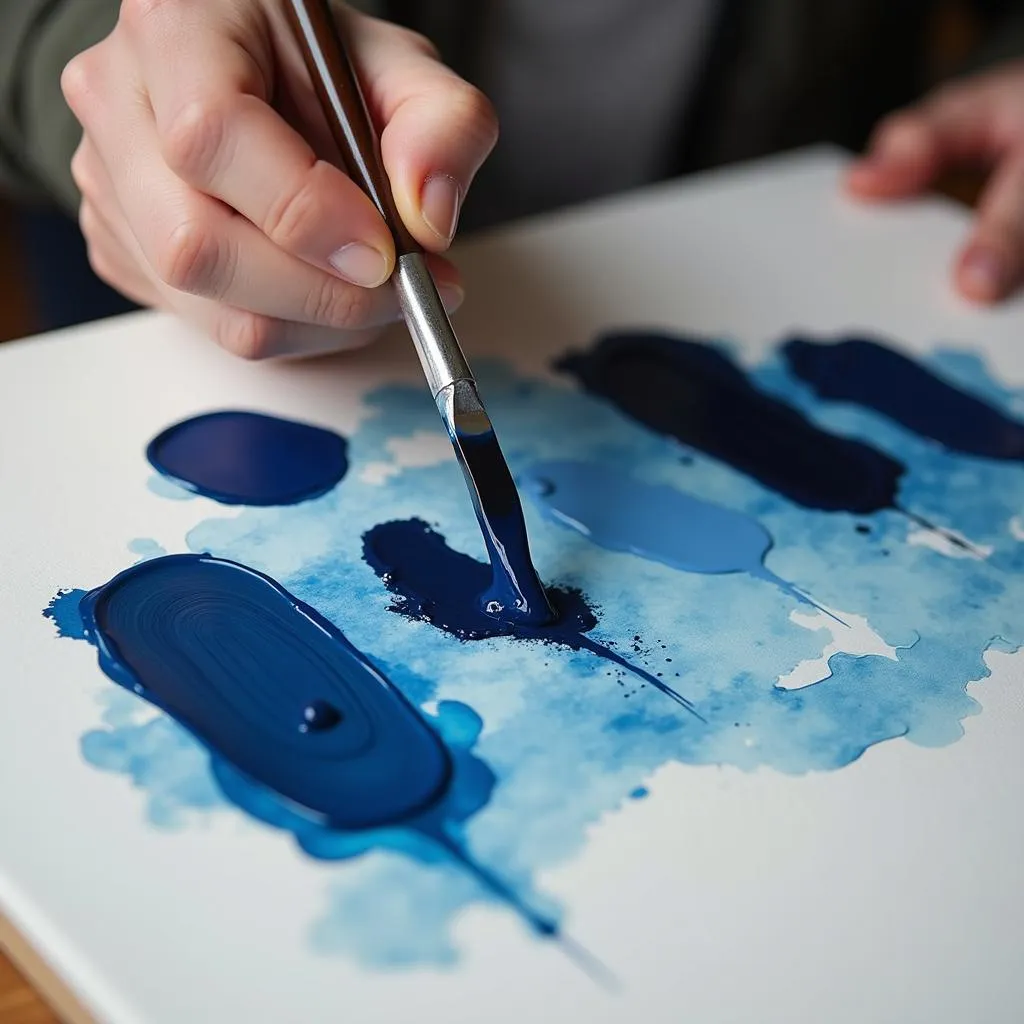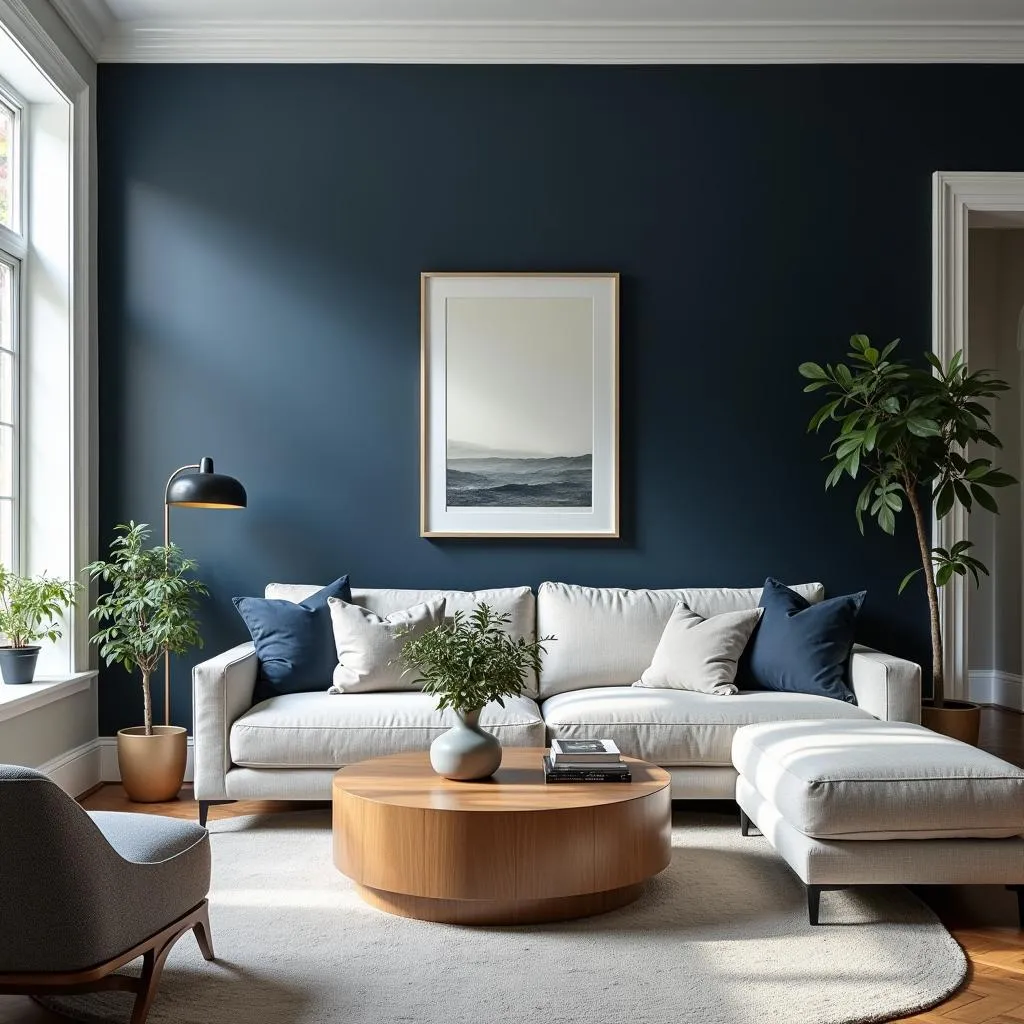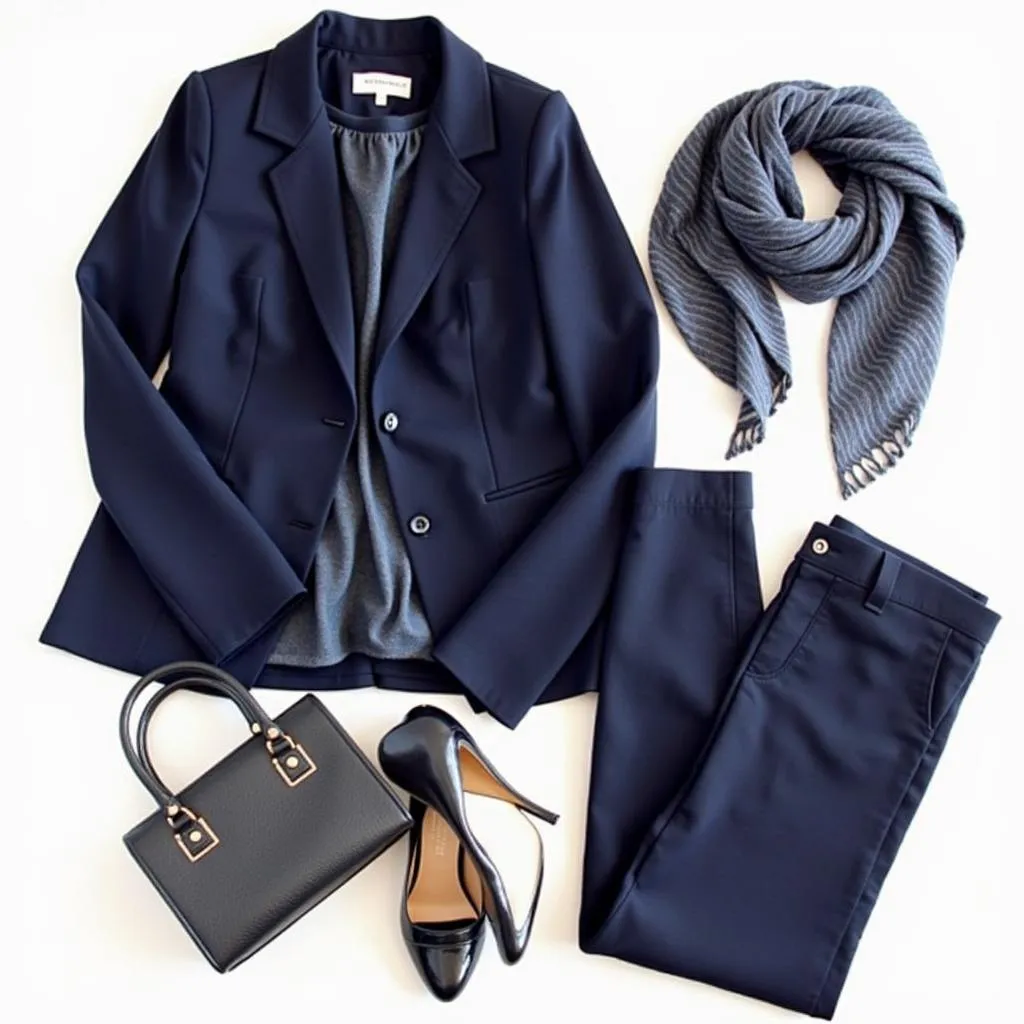Navy blue, a color often associated with sophistication, tranquility, and a touch of mystery, holds a special place in the world of design. Whether you’re aiming for a statement wall in your living room or hoping to add depth to your latest artwork, knowing how to perfectly mix this deep, rich hue is an invaluable skill. This guide will walk you through the intricacies of creating navy blue paint, empowering you to bring your creative visions to life.
Understanding the Basics of Color Mixing
Before embarking on our journey to navy blue, it’s essential to grasp the fundamentals of color mixing. The world of colors revolves around three primary colors: red, yellow, and blue. These primary hues act as the building blocks for creating a vast spectrum of colors, including our desired navy blue.
To create navy blue, we’ll be primarily focusing on blue as our base and gradually incorporating other colors to achieve the desired depth and undertones.
The Quest for the Perfect Navy Blue
The beauty of navy blue lies in its versatility. It can be warm and inviting with a hint of red or cool and calming with a touch of green. Here’s a step-by-step guide to mixing your perfect shade:
-
Start with Blue: Squeeze a generous amount of blue paint onto your palette. This will be the foundation of your navy blue. The exact shade of blue you choose will influence the final result, so feel free to experiment.
-
Add Black: Gradually introduce black paint to your blue base. Start with small amounts, mixing thoroughly after each addition. Black will darken the blue, leading you closer to that rich navy hue. Remember, less is more – you can always add more black later if needed.
-
Fine-Tune with Complementary Colors: To achieve the desired undertones and complexity, you can now incorporate complementary colors.
- For a warmer navy: Add a touch of red or orange paint.
- For a cooler navy: Introduce a small amount of green paint.
- For a more muted navy: Mix in a tiny drop of gray paint.
-
Test and Adjust: Before committing to your final mix, always test the color on a piece of scrap paper or canvas. This will allow you to see how the color dries and make any necessary adjustments.
 Mixing paint to achieve navy blue
Mixing paint to achieve navy blue
Tips for Consistent Results
Mixing paint is as much an art as it is a science. Here are some valuable tips to help you achieve consistent and stunning results:
-
Quality Matters: Invest in high-quality paints. They offer richer pigments and better blending capabilities, resulting in more vibrant and long-lasting colors.
-
Natural Light is Key: Observe your color mixtures under natural daylight whenever possible. Artificial lighting can distort color perception, leading to unexpected results.
-
Keep Records: Take notes of the colors and proportions you use, especially when you’ve created a shade you absolutely love. This will save you time and effort in the future.
Exploring the Versatility of Navy Blue
 A room with navy blue walls.
A room with navy blue walls.
Navy blue’s versatility extends beyond just mixing the perfect shade. It seamlessly blends into various design aesthetics, adding a touch of elegance to any space or creation.
-
In Interior Design: Navy blue can transform a room into a haven of tranquility. Whether used on walls, furniture, or accent pieces, it adds depth and character, creating a sophisticated backdrop for other colors and textures.
-
In Fashion: A timeless classic, navy blue is a staple in the fashion world. From tailored suits to flowy dresses, it exudes confidence and complements a wide range of skin tones.
-
In Art: Navy blue can add depth and drama to paintings, drawings, and mixed media pieces. It creates striking contrasts when paired with lighter colors and adds a touch of mystery to landscapes and abstract art.
 Navy blue clothing and accessories.
Navy blue clothing and accessories.
Conclusion
Mastering the art of mixing navy blue paint opens a world of creative possibilities. By understanding the basics of color theory, experimenting with different proportions, and considering the desired undertones, you can confidently create this captivating color and infuse your projects with its timeless elegance. So, grab your brushes, unleash your inner artist, and let the journey into the world of navy blue begin!
FAQs
1. Can I use acrylic paint to mix navy blue?
Yes, acrylic paint works well for mixing navy blue. It’s versatile, dries quickly, and offers good color vibrancy.
2. What happens if my navy blue turns out too dark?
If your navy blue becomes too dark, gradually add small amounts of your original blue paint to lighten it. You can also try incorporating a touch of white paint for subtle adjustments.
3. Can I mix navy blue with other colors to create different shades?
Absolutely! Navy blue serves as an excellent base for creating a range of shades. For example, mixing it with white yields a softer sky blue, while adding gray results in a muted blue-gray tone.
4. What’s the best way to clean my brushes after using navy blue paint?
Rinse your brushes thoroughly with soap and water immediately after use. If the paint has dried, you might need to use a brush cleaner specifically designed for acrylic or oil paints.
5. Does the brand of paint affect the final shade of navy blue?
Yes, different paint brands use varying pigment formulations, which can influence the final color. It’s always a good idea to stick with a single brand when mixing colors for consistency.
Need More Inspiration?
Looking for more color advice or tips on creating the perfect palette? Explore our other insightful articles:
- What color goes best with my skin tone?
- What color is ashen?
- [What color shirt to wear with olive green pants](https://colorbox.com.vn/what-color-shirt-to wear-with-olive-green-pants/)
Let Color Box Hanoi be your guide in navigating the vibrant world of colors!
Contact us today!
Phone: 0373298888
Email: [email protected]
Address: 86 Cầu Giấy, Hà Nội.

